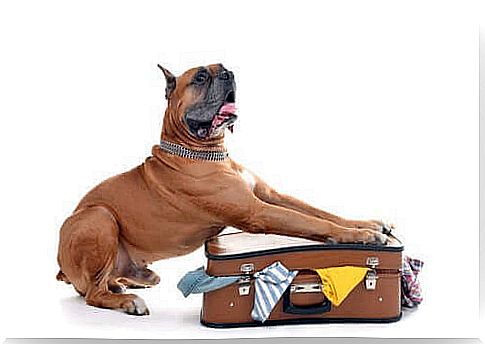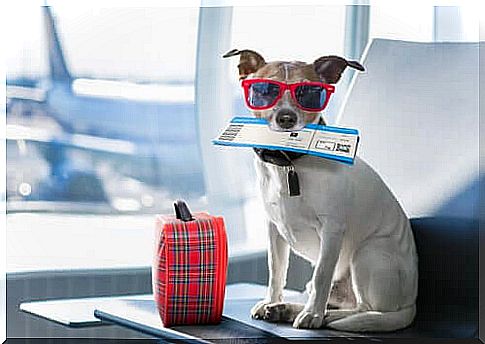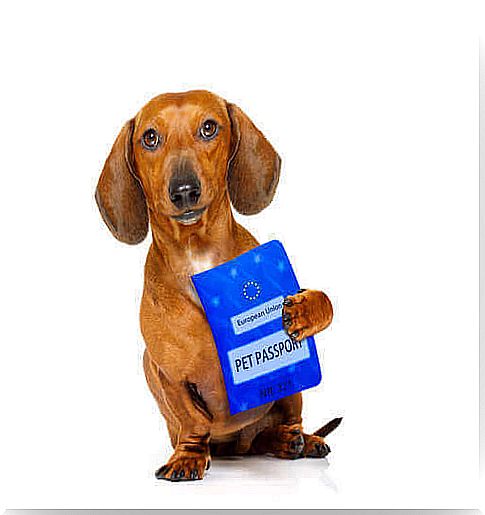Legal Formalities For Crossing Customs With A Dog

In practice, traveling abroad with a dog does not necessarily have to be complex or expensive. The advantages and disadvantages of going through customs with a dog always depend on the planning done.
In the following lines we will see what are the formalities and documentation necessary to travel with dogs within the European Union, whether by car or plane. There is nothing better than starting with some basic tips that will help you start planning your trip with your four-legged friend.
Things to know before traveling with a dog
Before planning the transfer of an animal, whether by air or by land, it is essential to know the current legislation of the country or region to which we are going.
Let us not forget that, even within the EU, it is possible that the laws in force on the entry and stay of dogs may differ significantly.
A good example is the French ban on entry with dogs belonging to breeds classified as potentially dangerous by national law. In practical terms, this means that we may be prohibited from crossing French customs with a dog, in case the animal is, for example, an American Rottweiler or Pit Bull.
So, if your goal is to enjoy a great holiday with your dog, remember that the first step is choosing a destination that you both enjoy.
In this sense, it is also worth taking a look at the amount of dog-friendly spaces and establishments available in the city or its surroundings.
Next, it would be good to think about the best means of transport on which to travel with your pet. Is the plane better? The car? Or the bike?
Each means of transport requires different programming and involves a completely different adaptation process for the dog. Consequently, it is a decision that should not be left for last, nor should the preparation of the dog be neglected.

Documentation needed to go through customs with a dog
When we talk about crossing a border and crossing customs with a dog, from a legal point of view it is essential to present certain documents, to validate the entry of the animal into the national territory.
If the trip takes place between member countries of the European Union, the guardian must bring with him the following documentation relating to his pet, duly updated:
- European pet passport. This is the official travel document for your pet within the EU, which must be signed and stamped by an authorized veterinarian. The passport must contain the basic information of the animal and its guardian, the number of its microchip and the vaccines administered to the animal with the date on which they were carried out and the technical specifications required.

- Minimum age. To cross a border in the company of his guardian, the dog must be at least three months old. Before this age, it is believed that the animal has not yet been able to receive the vaccinations and veterinary treatments necessary to ensure its safety.
- Microchip approved. To cross customs in the EU, dogs must be duly identified using an approved microchip. In addition, the device must meet the requirements of ISO 11784 or ISO 11785 Annex A. The old tattoo method is only considered valid for animals identified before 3 July 2011.
- Compulsory vaccines. The only compulsory and essential vaccine for entering an EU member country with a dog is the rabies vaccine. Likewise, its administration must be carried out at least 21 days before the departure date and its maximum validity is one year.
- It is also necessary to verify that the dog has received anti- parasite treatment, specifically the one against tapeworms, within three to five days before going through customs.
- Blood sample. Some European countries required the presentation of a blood sample taken 30 days after the administration of the rabies vaccine. To avoid any unforeseen events, we advise you to check if this requirement is in force in your destination.
Finally, we would like to remind you that on the European Commission’s website, on the Movement of Pets (Dogs, Cats and Ferrets) – Young Animals page , the positions of the member countries can be consulted on the possibility of introducing puppies of dogs, cats and ferrets without commercial purposes.









